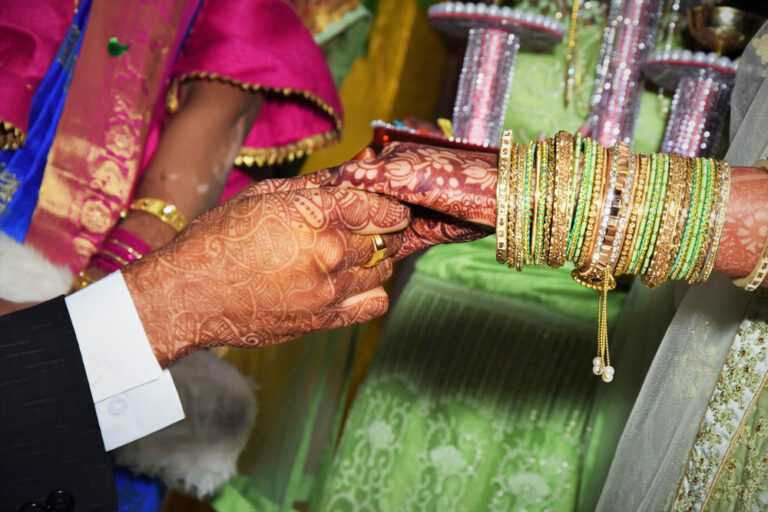Buddha Purnima 2022 Date, history, significance, celebration of Buddha Jayanti
Buddha Purnima honors the birth, enlightenment, and death of Siddhartha Gautama, or Lord Buddha. It is one of the largest Buddhist holidays in India.
| Year | Date | Day | Holiday | States |
|---|---|---|---|---|
| 2022 | 16 May | Mon | Buddha Purnima | AN, AR, CG, CH, DL, HP, JH, JK, MH, MP, MZ, TR, UK, UP & WB |
| 2023 | 5 May | Fri | Buddha Purnima | AN, AR, AS, CG, CH, DL, HP, JH, JK, MH, MP, MZ, OR, TR, UK, UP & WB |
| 2024 | 23 May | Thu | Buddha Purnima | AN, AR, AS, CG, CH, DL, HP, JH, JK, MH, MP, MZ, OR, TR, UK, UP & WB |
Please scroll down to end of page for previous years’ dates.
Although less than one percent of the Indian population identifies as Buddhist, Buddha Purnima is a vibrant holiday that attracts people from across the globe. The date of this holiday is not fixed to the Gregorian calendar like many Western holidays; it is observed on the full moon of the month of Vaishakha on the Hindu calendar. Buddhia Purnima is a holiday that is oriented around humility and respect.
Buddha Purnima was celebrated for hundreds of years after the death of Siddhartha Gautama. Despite this, the festival did not become an official Buddhist holiday until the middle of the 20th century. In 1950, the World Fellowship of Buddhists gathered in Sri Lanka to discuss the future of Buddhism. At this gathering, they decided to make Buddha Purnima an official holiday that would honour the birth, life, and death of Lord Buddha.
Previous Years Buddha Purnima
| Year | Date | Day | Holiday | States |
|---|---|---|---|---|
| 2021 | 26 May | Wed | Buddha Purnima | AN, AR, CG, CH, DL, HP, HR, JH, JK, MH, MP, MZ, TR, UK, UP & WB |
| 2020 | 7 May | Thu | Buddha Purnima | AN, AR, AS, CG, CH, DL, HP, JH, JK, MH, MP, MZ, OR, TR, UK, UP & WB |
| 2019 | 18 May | Sat | Buddha Purnima | AN, AR, CG, DL, HP, HR, JH, JK, MH, MP, MZ, TR, UK, UP & WB |
| 2018 | 30 Apr | Mon | Buddha Purnima | AN, AR, CG, DL, HP, HR, JH, JK, MH, MP, MZ, TR, UK, UP & WB |
| 2017 | 10 May | Wed | Buddha Purnima | AN, AR, CG, CH, DL, HP, HR, JH, JK, MH, MP, MZ, TR, UK, UP & WB |
Buddha Purnima History and significance
The birthday of Gautam Buddha, the founder of Buddhism, is celebrated as Buddha Purnima across the world since he was born as Prince Siddhartha Gautama on the Purnima Tithi (full moon day) in 563 BC in Lumbini (modern day Nepal). In Hinduism, Buddha is considered as the ninth avatar of Lord Vishnu hence, this day is commemorated by Buddhists and Hindus all over the world
In Theravada Buddhism, it is also observed as the day when Buddha, born as Prince Siddhartha Gautama (c. 563-483 BCE) attained Nirvana (salvation) under the Mahabodhi tree at Bodh Gaya, Bihar, as well as his death anniversary. Gautama Buddha preached Dharma (duty), non violence, harmony and kindness. He left his worldly possessions and princedom at the age of 30 to lead a life searching for the truth, seeking penance in the hopes of liberating himself from suffering (duhkha).
Buddha Purnima Celebrations
Devotees of Buddha visit temples, light candles and incense sticks, pray and offer sweets and fruits before the statue of Lord Buddha. Sermons on the life and teachings of Buddha are held and attended by followers all over. People usually dress in white, do not consume non-vegetarian food and distribute kheer, as according to Buddhist lore, on this day a woman named Sujata had offered Buddha a bowl of milk porridge.
Many followers also free caged birds on this day as a symbol of empathy and compassion for all living beings, one of the most important teachings of Lord Buddha. In India, a large fair takes place in Sarnath, Uttar Pradesh, a major Buddhist pilgrimage site where Buddha is said to have delivered his first sermon after attaining enlightenment.
The relics of Buddha are taken out for public display in a procession. Many Hindus also believe Buddha to be the ninth incarnation of Lord Vishnu. This year, with coronavirus pandemic and nationwide lockdown, now in phase 3, the celebrations are likely to look different.
Lumbini, the Birthplace of the Lord Buddha
Siddhartha Gautama, the Lord Buddha, was born in 623 B.C. in the famous gardens of Lumbini, which soon became a place of pilgrimage. Among the pilgrims was the Indian emperor Ashoka, who erected one of his commemorative pillars there. The site is now being developed as a Buddhist pilgrimage centre, where the archaeological remains associated with the birth of the Lord Buddha form a central feature.
- Why Do Parents Trust in Matrimonial Sites?Why Do Parents Trust in Matrimonial Sites? The idea of finding a life partner has changed… Read more: Why Do Parents Trust in Matrimonial Sites?
- The Importance of Compatibility in a Successful MarriageThe Importance of Compatibility in a Successful Marriage Have you ever observed that some couples have… Read more: The Importance of Compatibility in a Successful Marriage
- Plan Your Dream Marriage: A Step-by-Step GuidePlan Your Dream Marriage: A Step-by-Step Guide You two have made the decision to get married.… Read more: Plan Your Dream Marriage: A Step-by-Step Guide
- Plan Your Dream Marriage: Top 5 Destination Places to Tie the KnotPlan Your Dream Marriage: Top 5 Destination Places to Tie the Knot The setting of a… Read more: Plan Your Dream Marriage: Top 5 Destination Places to Tie the Knot
- Krishna Electrical Works New DelhiEssential Safety Guidelines for Handling Old Wiring: Best Practices & Tips – Krishna Electrical Works New… Read more: Krishna Electrical Works New Delhi
- Clear Signs You’re Falling for SomeoneClear Signs You’re Falling for Someone Falling for someone involves constant thoughts about them and excitement… Read more: Clear Signs You’re Falling for Someone
- How Can Users Be Identified and Verified on Matrimonial Sites?How Can Users Be Identified and Verified on Matrimonial Sites? Users on matrimonial sites can be… Read more: How Can Users Be Identified and Verified on Matrimonial Sites?
- Top searches on google for matrimony siteTop searches on google for matrimony site in india One of the most profound events in… Read more: Top searches on google for matrimony site
- Same Gotra Marriage Solutions? Learn About Your OptionsSame Gotra Marriage Solutions? Learn About Your Options “Gotra” has always been a mystery in Hinduism.… Read more: Same Gotra Marriage Solutions? Learn About Your Options
- What is Weddings from home?What is Weddings from home? Due to Pandemic, several wedding came to a halt. Couples were… Read more: What is Weddings from home?
- India’s top 10 matrimonial blogIndia’s top 10 matrimonial blog In Indian culture, the age-old concept of arranged marriages holds significant… Read more: India’s top 10 matrimonial blog
- Manglik girl characteristicsManglik girl characteristics In Vedic astrology, the term “Manglik” is used to describe individuals who have… Read more: Manglik girl characteristics
- Understanding the Influence of Ketu in the 7th House on Spouse Appearanceketu in 7th house spouse appearance In Vedic astrology, the position of Ketu in the seventh… Read more: Understanding the Influence of Ketu in the 7th House on Spouse Appearance
- Exploring Mangal Dosha in Bollywood: 20 Actors Under the Mars InfluenceIntroduction: In the realm of Bollywood, where glamour, fame, and superstitions coalesce, the concept of Mangal… Read more: Exploring Mangal Dosha in Bollywood: 20 Actors Under the Mars Influence
- Find Your Perfect Sikh Life Partner on Sikh Shaadi WebsitesFind Your Perfect Sikh Life Partner on Sikh Shaadi Websites Are you a Sikh single looking… Read more: Find Your Perfect Sikh Life Partner on Sikh Shaadi Websites
- Exploring Hindu Matrimony Websites in IndiaExploring Hindu Matrimony Websites in India: Bridging Tradition with Technology In a country as diverse as… Read more: Exploring Hindu Matrimony Websites in India
- Separated Shaadi: Delhi’s Premier Divorcee Matrimonial WebsiteSeparated Shaadi: Delhi’s Premier Divorcee Matrimonial Website Marriage is considered to be a sacred bond that… Read more: Separated Shaadi: Delhi’s Premier Divorcee Matrimonial Website
- Finding Love Again: Widower Marriage WebsiteFind Love Again: Widower Marriage Website Joining a widower marriage website can be a transformative experience… Read more: Finding Love Again: Widower Marriage Website
- Find Your Perfect Match on Divorced Matrimony PortalFind Your Perfect Match on Divorced Matrimony Portal Divorce is a difficult and challenging experience, but… Read more: Find Your Perfect Match on Divorced Matrimony Portal
- Find Your Perfect Match with Shaadi: The Ultimate Website for SinglesIntroducing Shaadi: The Ultimate Website for Singles Welcome to Matrimony Indians, the premier shaadi website for… Read more: Find Your Perfect Match with Shaadi: The Ultimate Website for Singles
- Find Your Perfect Match on Our Online Matrimony SiteFind Your Perfect Match on Our Online Matrimony Site Looking for your perfect match? Join our… Read more: Find Your Perfect Match on Our Online Matrimony Site
- Register on a Shaadi Website and Find Your Perfect MatchRegister on a Shaadi Website and Find Your Perfect Match Are you ready to take the… Read more: Register on a Shaadi Website and Find Your Perfect Match
- The Ultimate Guide to Muslim Matrimonial: Finding Love and HappinessThe Ultimate Guide to Muslim Matrimonial: Finding Love and Happiness Introduction: Muslim matrimonial services provide a… Read more: The Ultimate Guide to Muslim Matrimonial: Finding Love and Happiness
- The Advantages of Free Matrimony Services in Tamil NaduThe Advantages of Free Matrimony Services in Tamil Nadu Are you searching for a life partner… Read more: The Advantages of Free Matrimony Services in Tamil Nadu
- 2024 Choti Holi Puja Date & Time, 2024 Choti Holi CalendarAbout Choti Holi/Holika Dahan: Holika Dahan is a great ritual of the Hindu religion while celebrating… Read more: 2024 Choti Holi Puja Date & Time, 2024 Choti Holi Calendar
- Top 20 Most Common Indian Wedding Traditions and RitualsTop 20 Most Common Indian Wedding Traditions and Rituals Indian weddings are known for their grandeur,… Read more: Top 20 Most Common Indian Wedding Traditions and Rituals
- Free Matrimonial Sites for Second MarriageIntroduction Getting married for the second time can be an exciting and transformative experience. Whether you… Read more: Free Matrimonial Sites for Second Marriage
- The Beauty of Gujarati Matrimony: Celebrating Love and TraditionThe Beauty of Gujarati Matrimony: Celebrating Love and Tradition Discover the rich traditions and vibrant culture… Read more: The Beauty of Gujarati Matrimony: Celebrating Love and Tradition
- Finding Love and Commitment: Exploring the World of Christian MatrimonyIntroduction Welcome to the beautiful journey of Christian matrimony! This blog post explores the significance of… Read more: Finding Love and Commitment: Exploring the World of Christian Matrimony
- Second Marriage Matrimony – Finding Love and Happiness AgainSecond Marriage Matrimony – Finding Love and Happiness Again Getting married for the second time can… Read more: Second Marriage Matrimony – Finding Love and Happiness Again











